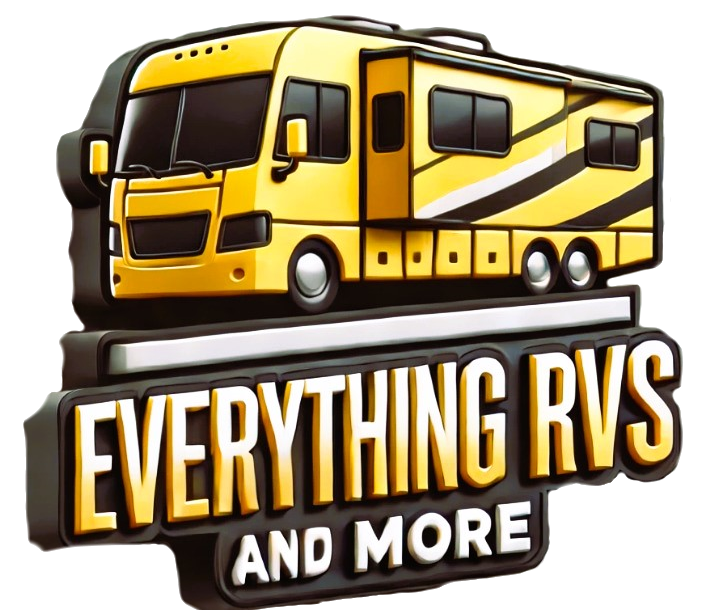Affiliate Disclosure: I earn commissions if you shop through the links below at no additional cost to you.
Last Updated on May 28, 2025 by Jeremy

Moving your RV off the beaten path and living independently brings a sort of freedom that’s tough to match. But if you’re aiming for true comfort and safety out in the wild, a few updates to your setup can totally change the experience. I learned quickly during my first boondocking trips that some RV upgrades weren’t just cool to have—they made life smoother, safer, and a whole lot more enjoyable.
If you’re gearing up for more offgrid escapes or full-time RV living in 2025, you might be surprised by how far tech and gear have advanced. Nowadays, there are super useful RV mods that can shift your entire experience off the grid. I’ve gathered the seven best upgrades that, both in my own travels and from stories shared by fellow RVers, can take your offgrid living from just possible to super comfortable.
Here’s a rundown of the top 7 must-have RV mods for anyone serious about offgrid adventures. These upgrades go beyond luxury—they’re about living longer, more comfortably, and without the usual hassles, wherever you decide to park.
1. Solar Power System: Capture Clean Energy Anywhere
Solar is the backbone of modern offgrid RV living. In 2025, solar panel kits are lighter, more efficient, and much easier to install than in the past. I’ve got a 600W setup—that’s plenty for running lights, charging gadgets, and even powering a low-wattage fridge. Flexible solar panels now fit right onto your RV’s roof, so you don’t have to worry about mounting bulky racks.
Why Solar Rocks for Offgrid Living:
- Keeps your batteries topped up without needing noisy generators or shore power.
- Super low maintenance after you set it up.
- Lets you camp in remote spots and avoid worrying about losing power.
I began with a straightforward 200W kit, added a smart charge controller, and eventually upgraded to lithium batteries (which I’ll get into below). There are tons of allinone kits for newcomers to installation—brands like Renogy, Battle Born, and BougeRV are definitely worth checking out if you’re starting fresh.
2. Lithium Battery Upgrade: Big Power, Less Hassle
Switching out old leadacid or AGM batteries for lithium iron phosphate (LiFePO4) batteries made an immediate difference: more usable power, less weight, and way faster charging times. As of 2025, lithium battery technology isn’t out of reach; prices have dropped, and there are plugandplay upgrades designed specifically for RVs.
Top Perks of Lithium:
- They deliver steady voltage, which is hugely important when running sensitive electronics.
- You don’t need to stress about running your batteries too low. You get nearly 100% usable capacity versus just around half with older types.
- Way less maintenance—no more topping off water or chasing down corrosion on the connections.
I put in two 100Ah lithium batteries, paired with a solar charge controller, and effectively doubled my time offgrid. If you’re planning any sort of boondocking in deserts or forests, this upgrade is absolutely key.
3. Smart InverterCharger Combo
To get power from your batteries to your outlets safely and efficiently—especially for things like laptops, blenders, or CPAP machines—you’ll need an inverter. In 2025, allinone invertercharger units are my top pick. They reliably switch DC to AC for your RV appliances, and, when you’re back near civilization, quickly recharge your batteries from shore power.
Main Features to Look For:
- Pure sine wave output protects sensitive equipment.
- Handy apps for remote monitoring, including reallife battery and load info.
- Automatic transfer switches—makes it easy to swap between solar, battery, or shore power.
I use a 3000W invertercharger, which can handle almost everything except the RV air conditioner. For most offgrid RV travelers, something in the 2000W3000W range is perfect. Companies like Victron and Go Power! are consistently reliable.
4. Water Filtration and Fresh Water Storage Upgrades
Staying hydrated and having clean water is just as crucial as power. Portable or undersink water filter systems have come a long way. My own kit includes a multistage filter with a UV sterilizer—a real game changer when filling your tanks from wells, streams, or unfamiliar campgrounds.
What’s Great About Modern Water Filtration:
- Longlasting cartridges that handle both weird tastes and harmful bacteria.
- Easyto-read indicators for filter life, so you know exactly when to change them out.
- Today’s models are compact, easy to fit inline under sinks, or right on your inlet hose out by the tank.
I also upgraded my water pump to a quieter highflow model and keep a spare 15gallon portable tank on the RV bumper for emergencies. This combo solves any “water stress” and keeps you out adventuring longer, even in the desert.
5. Soft Start and Power Protection Devices
Wild weather and unpredictable power sources are par for the course with offgrid living. A surge protector, softstart kit for your air conditioner, and an energy management system are musthaves for keeping your gadgets protected and your AC running—no matter if your solar system or a small generator is supplying the current.
Why Power Protection Matters Offgrid:
- Blocks electrical damage from storms and dodgy campground hookups.
- Lets even a small generator handle the air conditioner, thanks to softstart kits.
- Energy monitors give constant updates so you don’t risk popping a circuit or blowing a fuse unexpectedly.
I went with a Hughes Power Watchdog Bluetooth surge protector, plus a MicroAir EasyStart kit for my AC. The peace of mind is real, especially when you’ve invested in expensive offgrid gear.
6. Composting Toilet or Upgraded Dry Toilet
A composting toilet has been one of my favorite offgrid upgrades. These toilets break down waste using no water, just a vent fan to keep things fresh. The 2025 versions offer improved seals and faster breakdown, making them much more reliable than those of a few years ago.
What’s Different About Composting Toilets Today:
- No black tank is needed. This means fewer visits to dump stations and less overall maintenance.
- Designs now use clever airflow so your RV bathroom stays odorfree.
- It’s easy to stay in remote places longer, not having to dump black water every few days or weeks.
Nature’s Head, Air Head, and OGO are all brands with solid reputations. Even if a true composting toilet isn’t in your plans, a good dryflush or cassette system can extend your freedom between town runs in a big way.
7. Cellular and WiFi Booster Kits
Offgrid living doesn’t mean you have to be completely cut off. Getting a cellular and WiFi booster kit ensures you can still use maps, check the weather, or make emergency calls—pretty important even if you’re just casually exploring. For 2025, compact multicell boosters designed for RV roofs make keeping connected a breeze.
Why a Booster Changes the Game:
- Turns weak signals into ones you can actually use, even in farflung locations—great for work, emergencies, or just saying hi to folks back home.
- Boosters now autoadjust to optimize performance wherever you park.
- Installation is super simple with magnetic roof antennas and plugandplay repeaters below deck.
I’ve tested both the WeBoost Drive Reach and King Extend Pro, and both delivered impressive results. Even a basic kit can turn “offline” dead zones into places where you can stream a show after a long day.
Extra Handy Upgrades for Comfort and Safety
While those seven upgrades are truly important for offgrid RV life, a handful of extra mods can up the comfort and make things safer. LED lighting throughout your RV not only saves electricity, it brightens up every nook and feels extra modern. Bluetooth thermostats let you track the temperature remotely while you’re out exploring. Swapping in upgraded insulation (things like Reflectix window covers or insulated vent plugs) holds in heat and blocks out summer sun better than stock. For both security and peace of mind, a real-time tire pressure monitoring system and simple smart security cameras let you spot issues before they ever become problems.
Planning Your Offgrid RV Build: Tips for Beginners
Getting your rig ready for regular offgrid trips doesn’t have to happen overnight. When I first started, I tackled whatever would solve my biggest pain point first (upgrading batteries, for me), and added the rest of the upgrades gradually as time and money allowed. Watching RV forums or YouTube channels is smart for getting tips—there’s a welcoming community online eager to share what works. If you hit a complicated install, don’t hesitate to bring in a mobile RV tech. Sometimes a little help up front prevents costly future mishaps.
Before investing in new gear, make sure to look at your RV’s current layout and limitations: roof space, wiring, and storage are all critical. Many upgrades now come in modular or compact shapes, so even small RVs can add things like solar, lithium power, or water filtration. Careful research makes sure you’re buying stuff that delivers value and actually fits into your setup instead of being a waste of cash.
Final Thoughts
Living offgrid in 2025 can be just as comfortable and connected as you dream it to be, with the right RV upgrades. Solar panels, lithium batteries, communication boosters, and better water or toilet solutions all changed my travel style and helped me chase new adventures with total confidence. Pick the upgrades that address your top offgrid challenge, and you’ll immediately feel the difference on your next big trip.
Is there an upgrade you swear by that I missed? Or do you have questions about getting any of these mods installed? Leave a comment or reach out anytime—I enjoy sharing what I’ve learned during my own RV travels and testing. Safe travels and happy camping!



.jpg/:/cr=t:5.56%25,l:0%25,w:100%25,h:88.89%25/rs=w:1240,h:620,cg:true)



Leave a Reply